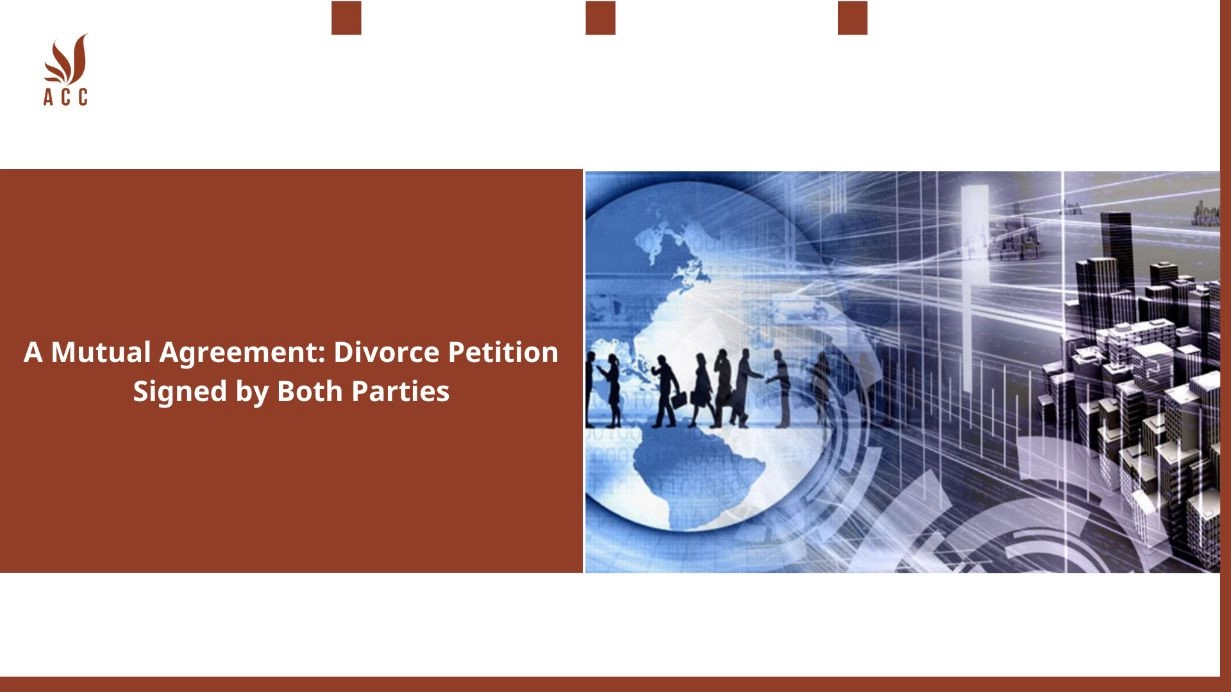
1. A Mutual Agreement: Divorce Petition Signed by Both Parties
Seeking marriage involves ending a personal relationship as well as a legal relationship. To get a legal divorce, one spouse must file with the court where they reside to request dissolution of the marriage. This can be done with or without the other spouse's participation. Depending on the form of divorce, the final divorce decree will be signed by one or both parties.
2. Divorce petition
The first document filed upon divorce is the Petition for Divorce. This document states that one or both parties are seeking to dissolve the marriage; It then lists the legal basis for that claim. One or both parties may sign the petition. If only one party signs the petition, that party must serve the other party with the petition and subpoena. If both parties sign the petition, the court considers the parties to have agreed and no hearing is scheduled. If one party files and the other party does not respond within the state's statutory time limit, the filing party may submit a signed divorce decree for court approval.
3. Decision to divorce
A decree of divorce is a formal court order setting forth the terms and conditions of the end of the marriage. This document is also known as the final decree. This document explains how a couple's assets will be divided at the end of the marriage. This includes provisions regarding property division, child support, alimony, child custody, and visitation. It may also include specific instructions regarding the child's upbringing, such as religion or place of residence. The records office at the district court keeps the final divorce decree on file permanently.
4. Uncontested divorce
In an uncontested divorce, the parties agree to the terms of ending their marriage. The parties or their attorneys draft a marital settlement agreement, which details the specific terms of the agreement. This document becomes the divorce decree once approved and signed by the judge. Both parties must sign an uncontested divorce decree before submitting it to the divorce court. Once the judge approves and signs the divorce decree, the divorce is final.
5. Divorce dispute
A contested divorce occurs when both parties cannot agree on some or all of the issues related to consummating their marriage. In these cases, the matter will go to trial and the divorce judge will hear evidence. After the trial, the judge makes a decision and then issues a verdict. Then, the parties must wait a certain amount of time before the divorce decree is issued and signed by the judge. Neither party signed the decree in this case.
6. Why should professionals use ACC Law Firm's divorce petition signed by two people service?
-
Mutual Agreement: This service caters to professionals who mutually agree to divorce. When both parties willingly sign the divorce petition, it signifies a cooperative and amicable approach to ending the marriage, which can lead to a smoother and less contentious process.
-
Legal Expertise: ACC Law Firm specializes in divorce proceedings and legal documentation. Their legal professionals ensure that the divorce petition accurately reflects the mutual agreement while complying with all relevant legal requirements and standards.
-
Efficiency: Initiating a divorce involves various administrative and legal procedures. ACC Law Firm's service streamlines this process, saving professionals valuable time and effort by providing guidance and the necessary documentation to initiate the divorce efficiently.
-
Procedural Guidance: Filing for divorce, even when both parties agree, requires adherence to specific legal procedures and requirements. ACC Law Firm's service offers professionals clear and precise guidance on how to complete the divorce petition correctly, ensuring compliance with the law.
-
Legal Protection: Using a professionally facilitated divorce petition offers legal protection by ensuring that professionals' rights and interests are clearly defined and legally recognized throughout the divorce process.
-
Customization: While based on mutual agreement, ACC Law Firm's service can still be customized to meet the specific needs and circumstances of professionals, ensuring that the divorce petition accurately reflects their individual situation.
-
Cost-Effective: ACC Law Firm's service provides a cost-effective alternative to hiring separate lawyers for both parties to draft a divorce petition. Professionals can achieve their legal goals without incurring excessive legal fees.
-
Legal Compliance: ACC Law Firm ensures that their divorce petition service complies with all relevant legal standards, reducing the risk of complications or errors.
-
Confidentiality: ACC Law Firm values client confidentiality and safeguards all personal and legal information related to the divorce petition.
-
Peace of Mind: Initiating a divorce is a significant life decision. Using ACC Law Firm's service provides peace of mind, knowing that the process is being managed professionally and correctly in accordance with both parties' mutual agreement and preferences.
Q&A
Question 1: What is a divorce petition signed by two people, and what sets it apart from other types of divorce petitions?
Answer 1: A divorce petition signed by two people, also known as a mutual divorce petition, is a legal document in which both spouses jointly agree to end their marriage. It sets itself apart by signifying that both spouses are in mutual agreement to divorce and have resolved various divorce-related issues, such as property division, child custody, and support, without significant disputes.
Question 2: What are the key elements typically included in a divorce petition signed by two people, and why is mutual agreement crucial in this context?
Answer 2: A divorce petition signed by two people includes standard information such as the names of both spouses, marriage details, grounds for divorce, child-related matters, property division preferences, and spousal support agreements. Mutual agreement is crucial because it simplifies the divorce process and reduces conflict. It indicates that both spouses are aligned in their desire to end the marriage and have worked together to reach amicable resolutions.
Question 3: How does the legal process typically unfold after both spouses sign a mutual divorce petition, and what role does the court play in finalizing the divorce?
Answer 3: After both spouses sign a mutual divorce petition, the court reviews the document to ensure it meets legal requirements. Subsequent steps may include hearings, where the court may verify that both parties have freely consented to the divorce and have made informed decisions regarding property and child-related matters. The court's role is to formalize the divorce based on the mutually agreed-upon terms and issue a divorce decree to legally dissolve the marriage.
Question 4: What are some practical advantages of opting for a divorce petition signed by two people, and what considerations should couples keep in mind when choosing this approach?
Answer 4: Some practical advantages of mutual divorce petitions include a more streamlined and less contentious process, reduced legal costs, and quicker resolution. However, couples should consider the importance of full disclosure and fairness in agreements, particularly regarding property division and child-related matters. It's advisable for both parties to seek legal counsel to ensure their rights are protected and that the proposed agreements are equitable and legally sound.
Nội dung bài viết:






Bình luận